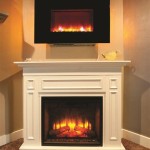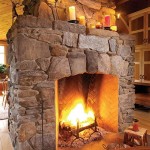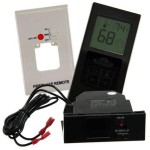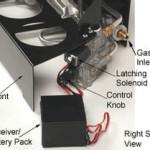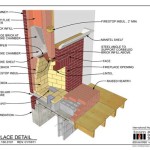Also, cite at least three different websites or articles. Please use at least three different headings.
Propane Fireplace Ventless Inserts: A Comprehensive Guide
Propane fireplace ventless inserts offer an attractive and relatively convenient way to add supplemental heat and ambiance to a home. Unlike traditional wood-burning fireplaces, or vented gas fireplaces, ventless inserts require no chimney or venting system, allowing for installation in various locations. However, understanding their functionality, safety considerations, and maintenance needs is crucial before making a purchase.
These inserts operate by directly heating the surrounding air, distributing warmth through convection and radiation. Because there is no venting system, all combustion byproducts, including carbon dioxide, water vapor, and trace amounts of other gases, are released directly into the living space. This fundamental difference from vented systems necessitates careful consideration and adherence to safety guidelines.
The core principle of a ventless propane fireplace insert hinges on complete combustion. A properly functioning unit is designed to burn propane fuel almost entirely, resulting in minimal emissions. Oxygen Depletion Sensors (ODS) are a critical safety feature in these appliances. The ODS constantly monitors oxygen levels in the room. If the oxygen level drops below a safe threshold, indicating incomplete combustion and a potential buildup of carbon monoxide, the ODS will shut off the gas supply to the fireplace, preventing further operation. This safety mechanism is paramount to the safe use of ventless propane inserts.
Understanding the Mechanics of Ventless Propane Fireplace Inserts
A ventless propane fireplace insert consists of several key components working in synchronization. These components include the burner, the gas valve, the pilot light assembly, the oxygen depletion sensor (ODS), and the decorative elements. The burner is responsible for mixing propane with air and igniting the mixture to produce heat and flame. The gas valve regulates the flow of propane to the burner and is controlled by the unit's thermostat or manual controls. The pilot light assembly provides a continuous flame source to ignite the main burner when the gas valve opens. The oxygen depletion sensor (ODS), discussed previously, is a critical safety device.
The efficiency of a ventless propane fireplace insert is measured by its heating capacity and the amount of propane it consumes. Heating capacity is typically expressed in British Thermal Units (BTUs) per hour. A higher BTU rating indicates a greater heating output. However, it is essential to select an insert with a BTU rating appropriate for the size of the room. An oversized unit can lead to overheating and discomfort, while an undersized unit may not provide sufficient heating. Propane consumption is measured by volume, usually in gallons per hour. This information is crucial for estimating operating costs.
The installation process for a ventless propane fireplace insert is generally simpler than that of a vented fireplace. Since no venting is required, the insert can be placed against an existing wall or within a suitable firebox opening. However, it is crucial to follow the manufacturer's instructions meticulously. Proper gas line connections are essential for safe operation, and it is always advisable to have a qualified technician handle the gas line installation. Ensuring adequate clearances around the insert is also critical to prevent overheating and potential fire hazards.
Safety Considerations and Proper Usage
The primary concern with ventless propane fireplace inserts revolves around indoor air quality. Because combustion byproducts are released into the living space, it is essential to ensure adequate ventilation. While ODS systems mitigate the risk of carbon monoxide poisoning, proper ventilation helps to dilute other combustion byproducts, such as nitrogen dioxide and water vapor. Opening a window or operating a ventilation fan can significantly improve air quality. It is generally recommended that ventless propane fireplace inserts only be used as supplemental heat sources and not as the primary heating system for the home.
Carbon monoxide detectors are an indispensable safety device for any home using a ventless propane fireplace insert. These detectors provide an early warning of elevated carbon monoxide levels, allowing occupants to evacuate the premises and take corrective action. Carbon monoxide detectors should be installed in accordance with the manufacturer's instructions and regularly tested to ensure proper functionality.
Regular maintenance is essential for ensuring the safe and efficient operation of a ventless propane fireplace insert. This includes cleaning the burner, inspecting the gas line connections, and checking the ODS system. Dust and debris can accumulate on the burner, hindering proper combustion and potentially leading to incomplete burning and increased emissions. Gas line connections should be checked for leaks using a soapy water solution. The ODS system should be tested periodically to ensure it is functioning correctly and will shut off the gas supply in the event of oxygen depletion.
It is also crucial to adhere to the manufacturer's recommendations regarding the type of propane fuel to be used. Using the wrong type of fuel can damage the unit and compromise its safety. It is important to use only propane, and to ensure the propane is clean and free of contaminants.
Choosing the Right Ventless Propane Fireplace Insert
Selecting the appropriate ventless propane fireplace insert requires considering several factors, including room size, heating needs, aesthetic preferences, and budget. Room size is a critical determinant of the appropriate BTU rating. A larger room will require a higher BTU rating to achieve the desired level of warmth. Heating needs will also influence the choice of unit. If the insert is intended as a supplemental heat source, a lower BTU rating may suffice. However, if it is to be used more frequently or to heat a larger area, a higher BTU rating may be necessary.
Ventless propane fireplace inserts are available in various styles and finishes, allowing homeowners to choose a unit that complements their decor. Traditional designs mimic the look of wood-burning fireplaces, while more modern designs feature sleek lines and contemporary finishes. The aesthetic appeal of the insert is an important consideration for many homeowners. The price range for ventless propane fireplace inserts can vary significantly, depending on the size, features, and brand. It is essential to establish a budget before beginning the selection process.
The long-term operating costs of a ventless propane fireplace insert include the cost of propane fuel and maintenance. Estimating propane consumption based on the BTU rating and usage patterns is crucial for budgeting purposes. Maintenance costs will vary depending on the frequency of use and the complexity of the unit. Choosing a reputable brand with a good warranty can help to minimize potential repair costs.
Before purchasing and installing a ventless propane fireplace insert, it is crucial to check local building codes and regulations. Some jurisdictions may have restrictions or prohibitions on the use of ventless appliances. Ensuring compliance with local codes is essential to avoid potential fines or legal issues. Additionally, it is advisable to consult with a qualified HVAC professional or building inspector to ensure that the installation is safe and compliant with all applicable regulations.
Ventless propane fireplace inserts can provide supplemental heat and aesthetic appeal without the need for a chimney. However, they require careful consideration of safety factors. Proper installation, utilizing carbon monoxide detectors, and an understanding of ventilation are crucial to safe operation. By taking these precautions, homeowners can enjoy the warmth and ambiance of a ventless propane fireplace insert responsibly.
Citations:
1.National Fire Protection Association (NFPA):
[https://www.nfpa.org/](https://www.nfpa.org/) - Provides information on fire safety standards and regulations, including those related to gas-burning appliances. This site would offer insight into general safety considerations for propane appliances. 2.U.S. Environmental Protection Agency (EPA):
[https://www.epa.gov/](https://www.epa.gov/) - Offers information on indoor air quality and the potential health effects of combustion byproducts. This site is useful when looking at the issue of ventilation and emissions. 3.Energy.gov:
[https://www.energy.gov/](https://www.energy.gov/) - The Department of Energy's website has information on energy efficiency and heating technologies, including gas fireplaces. This site is useful for comparing the efficiency of different heating options.
Vent Free Inserts White Mountain Hearth
:max_bytes(150000):strip_icc()/ventless-gas-fireplaces-4160746-hero-f9d4bdcd9bd446eb84406de306f790ba.jpg?strip=all)
How To Pick Out A Ventless Gas Fireplace

Duluth Forge 36 In Ventless Dual Fuel Fireplace Insert With Remote Control Fdi32r The Home Depot

Duluth Forge 43 5 In Black Ventless Natural Or Liquid Propane Gas Fireplace The Fireplaces Department At Com

Procom 26 000 Btu Vent Free Dual Fuel Propane And Natural Gas Indoor Fireplace Insert With T Stat Control 170082 The Home Depot

White Mountain Hearth By Empire Ventless Outdoor Traditional Premium Gas Fireplace 36

Vent Free Inserts White Mountain Hearth

Bluegrass Living 34 In W 32000 Btu Black Vent Free Dual Burner Gas Fireplace Insert And Remote The Inserts Department At Com

Pleasant Hearth 42 In Heritage Ventless Liquid Propane Gas Fireplace The Fireplaces Department At Com

Duluth Forge 29 1 In Dual Fuel Ventless Gas Fireplace Insert 32 000 Btu Remote Control At Tractor Supply Co


